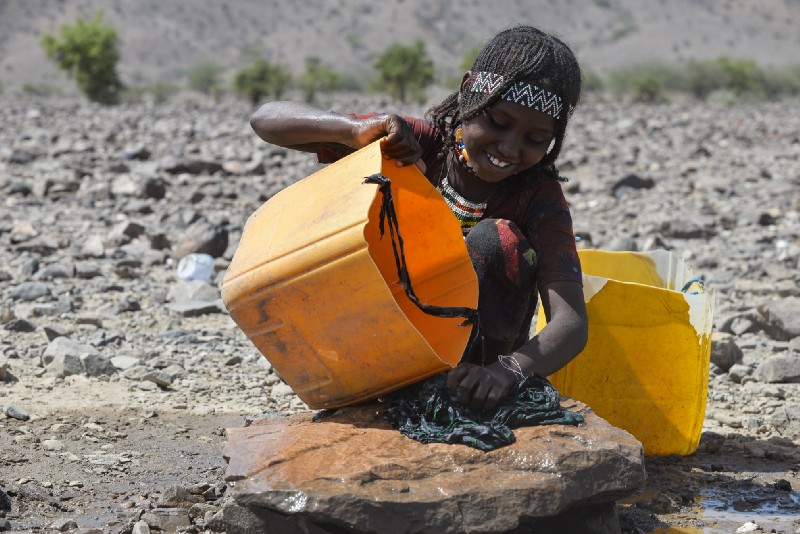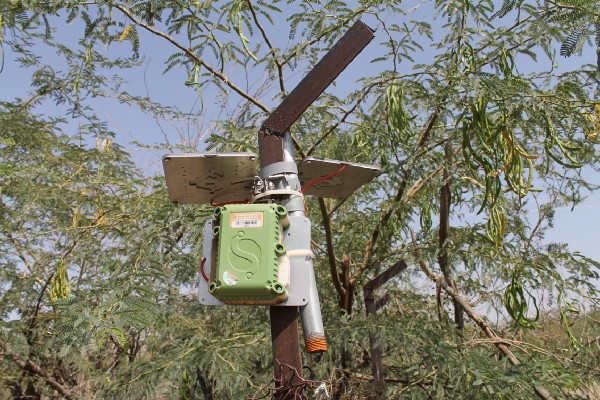In some developing countries, especially those in semi-arid areas, water sources are few and far between which has limited water availability. However, other factors like poor construction, lack of resources, and insufficient manpower for maintenance, repair, and response have also greatly contributed to this problem. This has led to organizations creating WASH, or Water, Sanitation, and Hygiene programs to help curb these issues.
Ethiopia is one of the countries facing challenges with Water and Sanitation and the country is ramping up efforts to harness additional resources, innovative approaches, and partnerships to meet its 2020 goal of increasing basic water access to 83 percent of its population (from 65 percent nationwide as of 2016) and certifying 80 percent of its communities as an open defecation free (from 29 percent as of 2015).
Ethiopia has now launched its plan to improve water, health, and sanitation through its one WASH national program. Nationwide inventories paint a bleak picture of water point functionality, according to an article written by Wendy Putman in Global Waters, a magazine published by USAID.
In some areas, up to 40 percent of water points appear to be nonfunctioning, according to the article, which has prompted organizations to apply the internet of things to receive real-time updates on water systems.
What is the Internet of Things?
The IoT refers to a network of technologies which can monitor the status of physical objects, capture meaningful data and communicate this data. These complex systems require huge capacity and significant planning to address maintenance backlogs. The problem usually arises when you do not know what and where the problem is. Technologies are now able to monitor objects such as smart water meters and other electronic devices, organisms or a natural part of the environment such as the area below the ground. This monitoring can be achieved through the addition of a data transmission device commonly referred to as sensors.
Each Sensor monitors a specific condition or set of conditions such as vibrations, motion, temperature, pressure, etc. These sensors transmit a daily data flow signal via cell phone or satellites (in the case of more remote settings) to a central cloud-based remote dashboard.
With the help of private-sector partner SweetSense, 107 sensors have been installed so far in the regions in Ethiopia to conduct real-time data for monitoring of each water scheme’s operations, according to Global Waters.
These sensors rely on the same technology that enables many people in other countries to program their thermostats remotely from an app on their phones.
Must read: UCC hits back at Evelyn Namara over fraud accusations
Lowland WASH is the organization that is monitoring this program. By the end of 2018, 100 percent of the mechanized water points will be monitored using the unique sensors and tracked using a data visualization platform created with technical assistance.
In addition to enabling decision-makers in Ethiopia to improve accountability when it comes to maintenance needs and response, the system can serve as a powerful advocacy tool to address additional equipment, manpower, and resource needs that are identified.

An Afari teenage girl squats down to do her laundry at a solar-powered water point in Adhamdin, Erebti woreda of Ethiopia. Photo credit: Michael Tewelde
Lessons learned from pilot schemes are already being shared as USAID partners with UNICEF in the Somali region to install a similar sensor and monitoring system.
Treating ground water
Through partnerships, Lowland WASH is also building a new water scheme that includes a reverse osmosis system to enable communities to safely treat groundwater that is high in temperature (over 70 degrees Celsius), high in salinity, and fluoride.
“We are always looking for synergies between our activities and opportunities to work with private sector partners,” says Kathrin Tegenfeldt, USAID/Ethiopia climate, and water advisor.
Building, restoring, and tracking water systems are important steps in increasing access to water, but ensuring these systems are sustained in the long run continues to be a challenge.
Learning from USAID’s past work, Lowland WASH contributes significant resources and energy to establishing or revitalizing gender-balanced WASH committees (WASHCOs) in charge of operating and providing basic maintenance of the water points.
Lowland WASH is also engaging in different advocacy approaches to scale up pastoral-focused WASH integration in general as the government strategies, manuals, and guidelines are more focused on urban WASH, rather than considering the unique culture, norms, and harsh environmental conditions of the rural, pastoral communities
The government appears to see this need. “Innovations for pastoral sanitation should be developed in response to calls from partners for practical guidance on how to mobilize communities and improve sanitation in lowland areas,” writes Putman quoting officials.
Related:
MTN, Vodacom warm up for ‘liberalised’ Ethiopian economy
Safaricom set to introduce mobile money to Ethiopia

